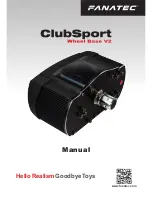
page 30
This operation is automatically carried out by the CAN controller
in conjunction with the operating system. To avoid processing
each CAN message it is possible to only let a certain part of the
bus data reach the CAN controller by indicating a so-called
acceptance mask (CAN_ACCEPTANCE). The use of this
special function only makes sense if data are not relevant for
certain bus participants and time optimization in a plc module is
absolutely required for CAN processing. To employ this function
hardware knowledge of the CAN controller is necessary. This
information is provided in the manufacturer's documentation or
can be obtained from the technical support of ifm electronic
gmbh.
For the normal exchange of data via CAN the programmer only
has to inform the system of the data objects with their identifiers
by means of the functions CAN_RECEIVE and
CAN_TRANSMIT when designing the software. Via these
functions the RAM address of the operating data, the data type
and the selected identifier are combined to form a data object.
They then participate in the data exchange via the CAN bus.
The transmit and receive objects can be defined from all valid
IEC data types (e.g. BOOL, WORD, INT, ARRAY).
The CAN message consists of an identifier and max. 8 data
bytes. The identifier can be freely selected between 1 and 2048.
As already mentioned, it does not represent the sender or
receiver module but qualifies the message. To transmit data it is
necessary that in the sender module a transmit object is
declared and a receiver object in
at least one
other module.
Both declarations must be assigned to the same identifier.
Receive data
In principle, the received data objects are automatically stored in
a buffer (i.e. without the user's influence).
A buffer (queue) is available for each identifier. It is emptied by
means of the function CAN_RECEIVE to the FIFO principle
(First In, First Out) depending on the application software. In the
queue
max. 30
data transmissions are stored temporarily. More
data transmissions can only be stored after the buffer has been
emptied. The reception of a new CAN message leads to
overflow of the queue, which is indicated to the user by the
OVERFLOW bit.
Transmit data
By calling the function CAN_TRANSMIT the application
program transfers exactly one CAN message to the CAN
controller. As feedback you receive the information whether the
message has been successfully transferred to the CAN
controller which then performs the actual transfer of the data to
the CAN bus.
The transmission order is rejected if the controller is not ready
because it is in the process of transferring a data object. The
transmission order must then be repeated by the application
program. This information is indicated to the user by means of a
bit.
Summary of Contents for ecomat 100 R 360 Series
Page 1: ...System manual ecomat 100 type R 360 ...
Page 14: ...page 14 ...
Page 26: ...page 26 ...
Page 86: ...page 86 ...
Page 100: ...page 100 ...
Page 126: ...page 126 ...
Page 146: ...page 146 ...
Page 162: ...page 162 ...
Page 163: ...page 163 Annex 2 Wiring Annex 2 1 Type CR0015 ...
Page 164: ...page 164 Annex 2 2 Type CR0016 ...
Page 165: ...page 165 Annex 2 3 Type CR0017 ...
Page 166: ...page 166 Annex 2 4 Type CR0501 ...















































